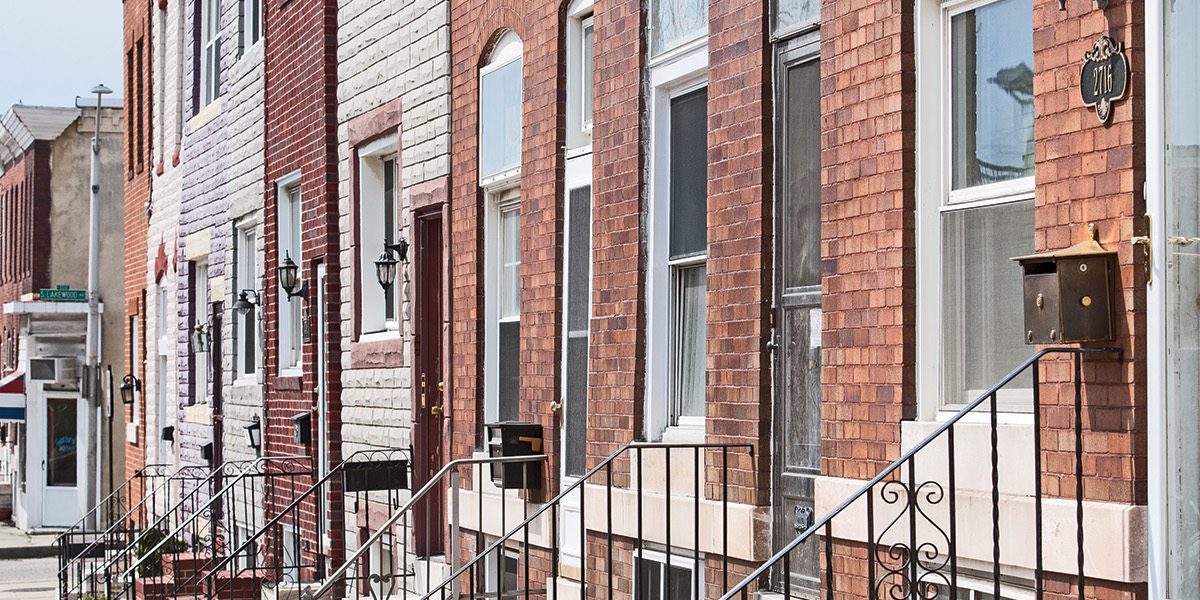News & Community
Then and Now: Homes
Range farther afield and the city’s diverse architecture becomes apparent, from narrow row houses to Guilford’s stately mansions.
As you trace the footsteps of Baltimore’s literary luminaries—Poe, Mencken, etc.—on the Maryland Humanities Council’s Mt. Vernon walking tour—you move from brownstone to brownstone. Range farther afield and the city’s diverse architecture becomes apparent, from narrow row houses to Guilford’s stately mansions.
Penrose Street
The classic photo of women and children scrubbing their marble steps—a trademark of Baltimore architecture made possible by the high-quality white marble quarried in Cockeysville—was shot by renowned Baltimore Sun photographer A. Aubrey Bodine. Done properly, the ritual marble stoop cleaning process included scrubbing with a pumice stone and Bon Ami powder.
Canton Row Homes
In the early 1900s, the neighborhood’s row houses were home to Irish and Eastern Europeans who worked at the port and canneries.
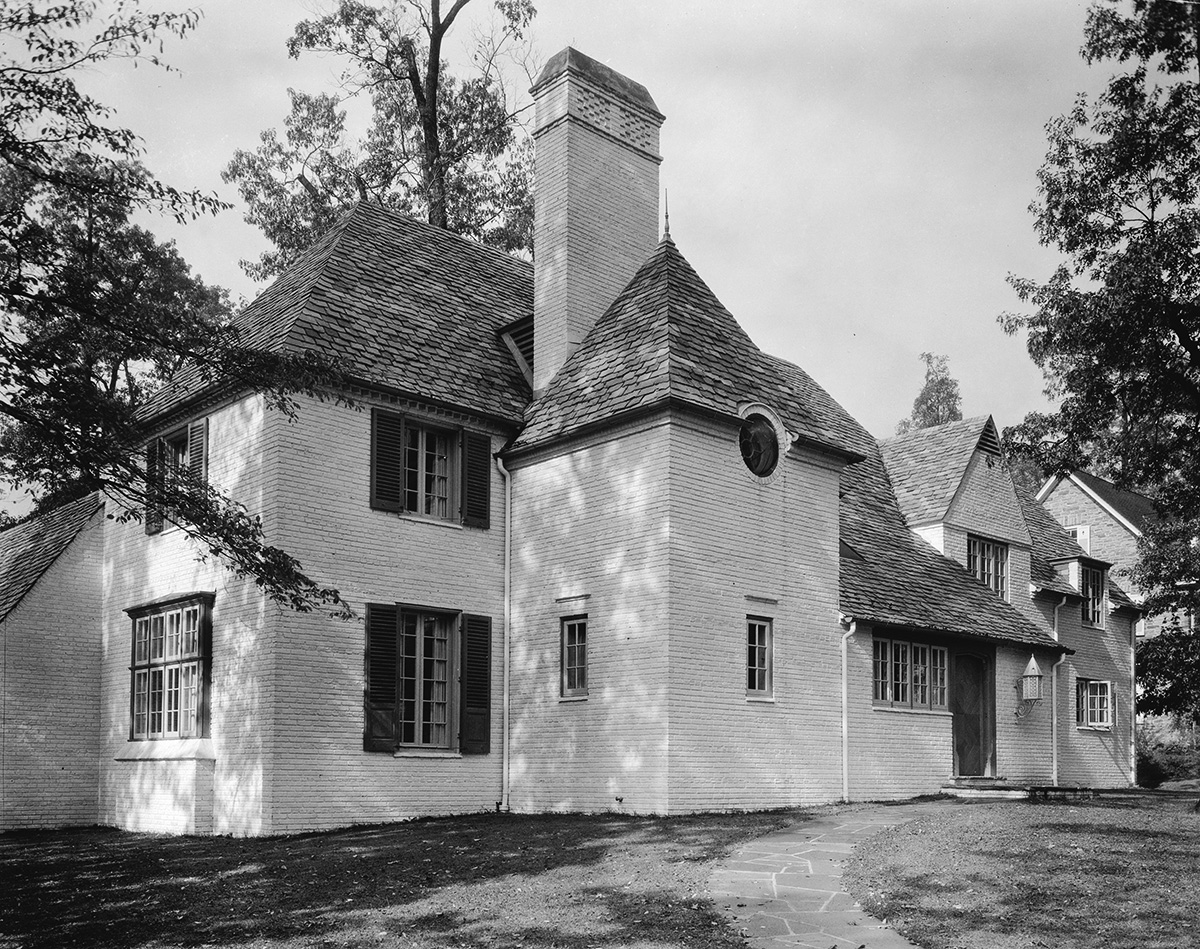
Guilford
Each home in this old-money neighborhood possesses its own distinct charm.
Old-School Artforms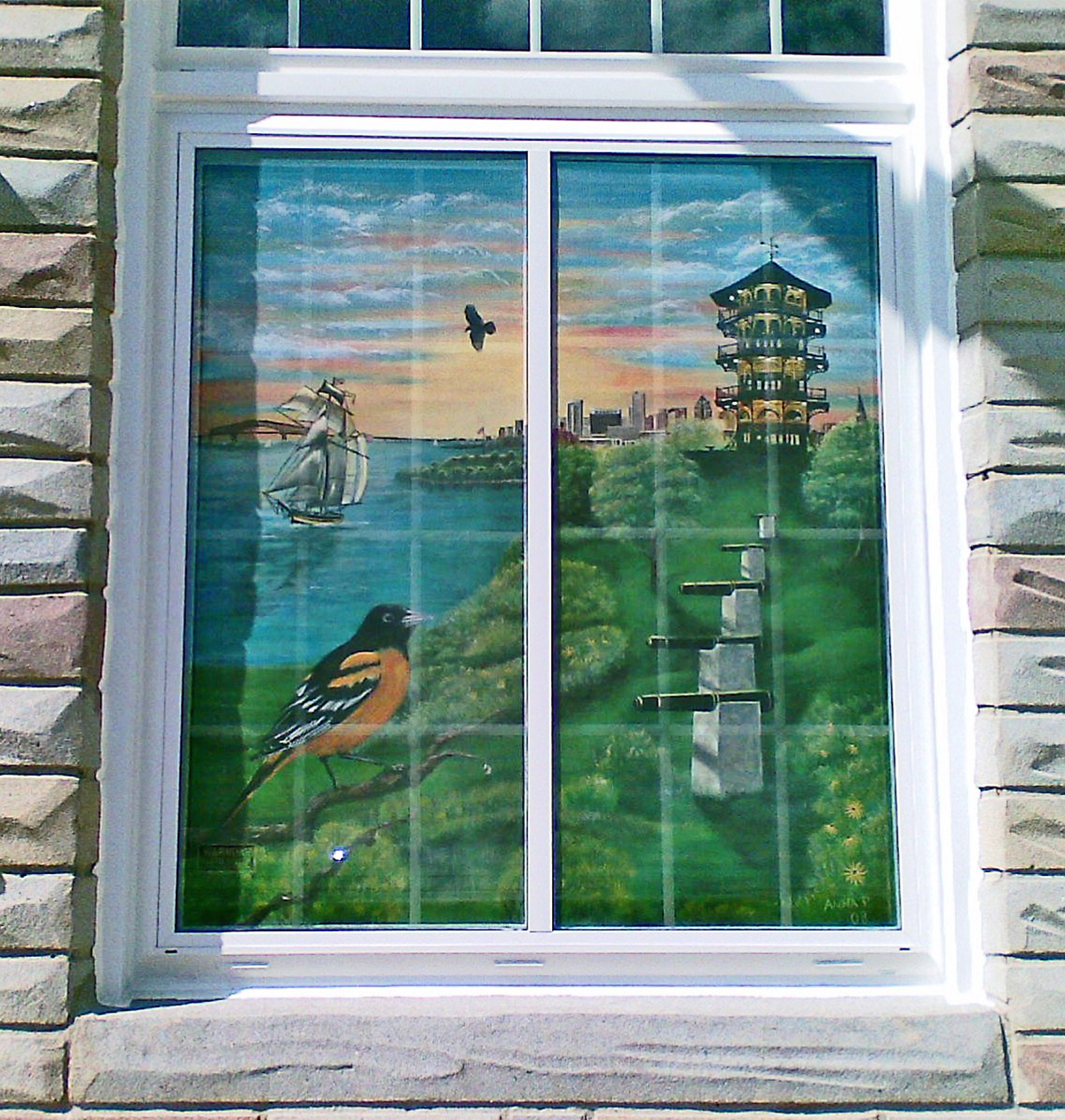
In 1913, a Czech immigrant grocer named William Oktavec painted his screen door. Soon, neighbors requested he paint their front window screens, and over time, the folk art became synonymous with Baltimore’s blue-collar, Formstone-sided row houses.
(Photo by Anna Pasqualucci)
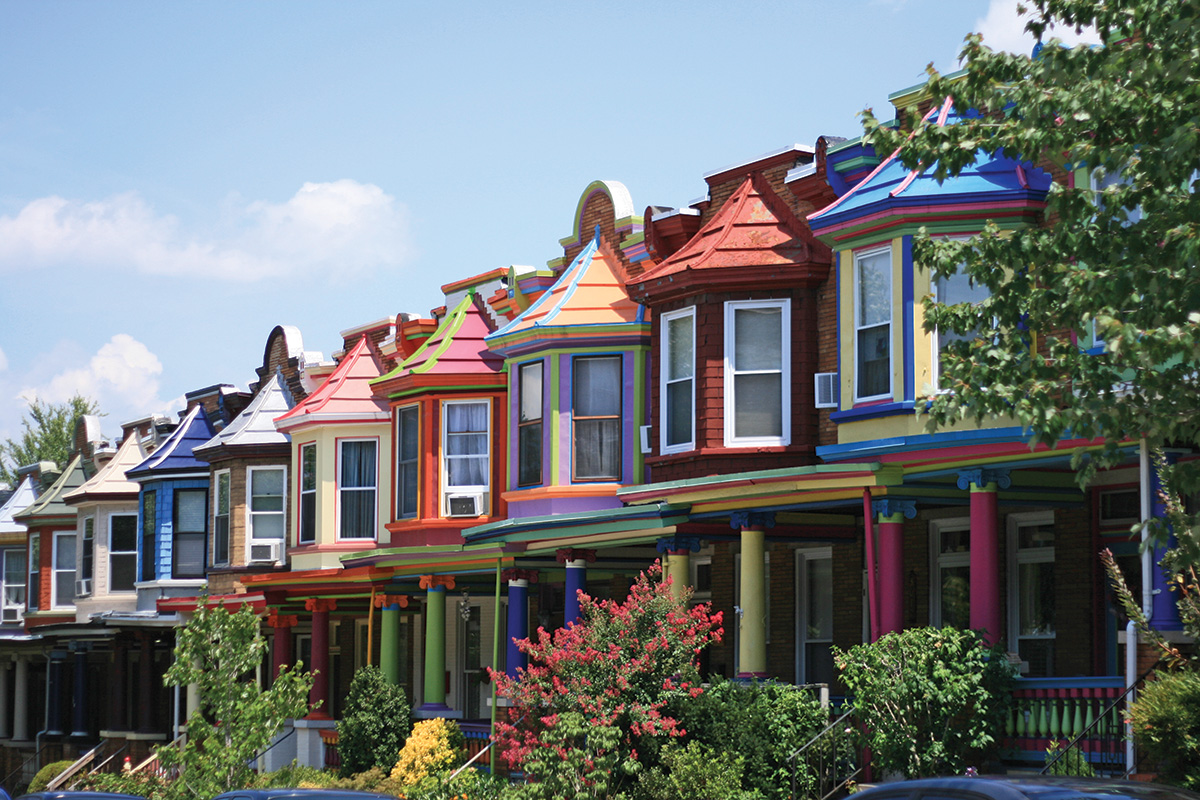
Charles Village
The now-ubiquitous “Painted Ladies” of Charles Village have only been around for 16 years, dating to a neighborhood painting contest inspired by the famous Victorian homes of San Francisco.
That was then, this is now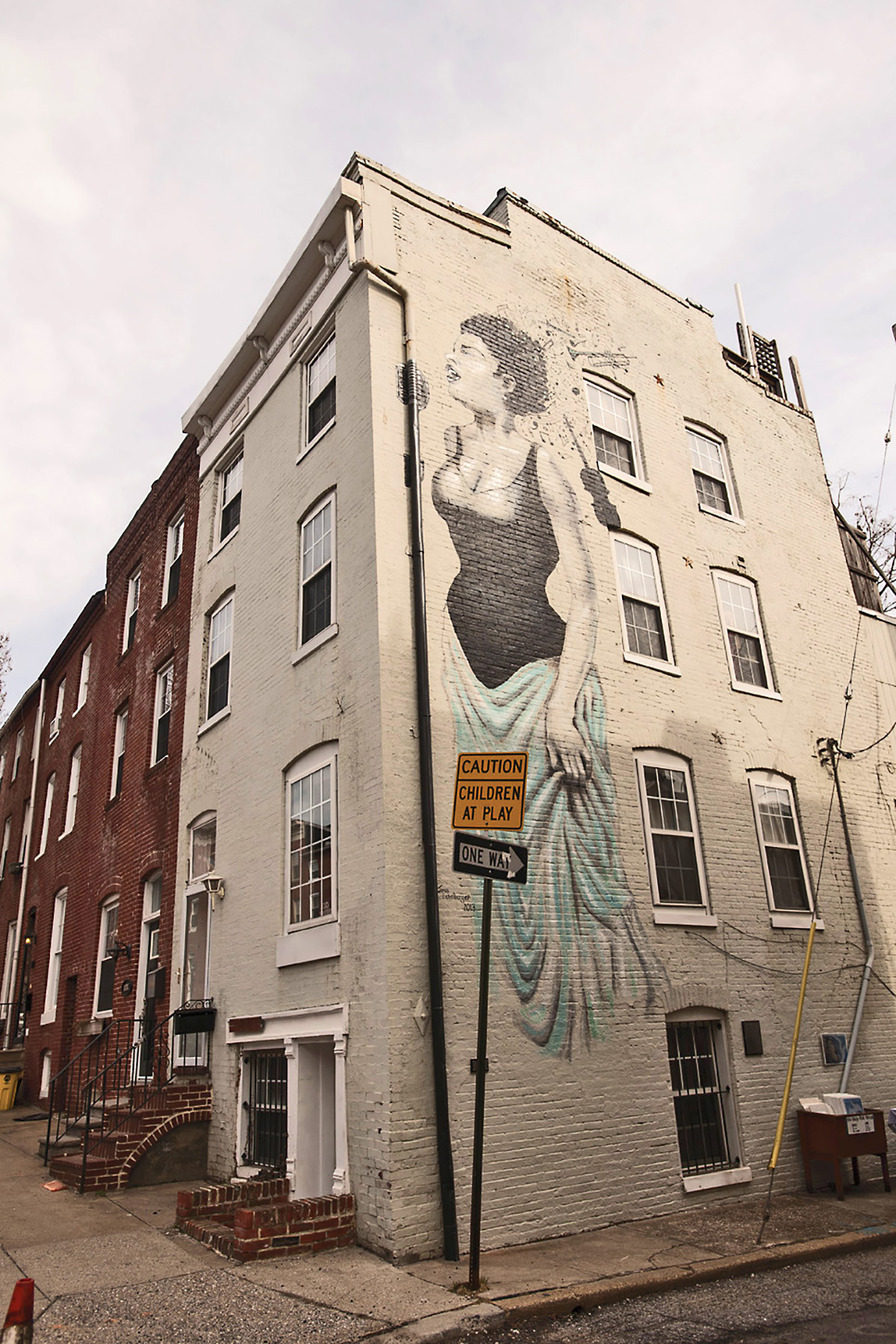
Billie Holiday’s Street
At Durham and Pratt streets, there’s a new, four-story mural of Billie Holiday, who grew up on this Upper Fells Point block. Leading to her childhood home down the street is a mosaic of the blues singer in full voice——white plates forming the iconic gardenias she wore in her hair. The work, which portrays waves of sound morphing into bluebirds as the piece moves toward her former front door, is part of a larger effort to memorialize “Lady Day” in her former neighborhood.
(Photo by David Colwell)
